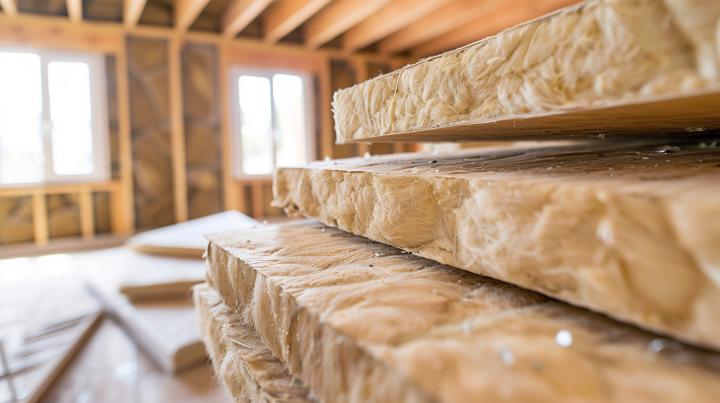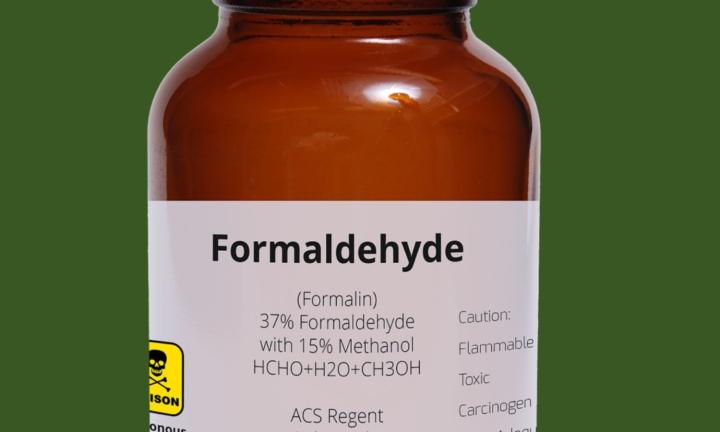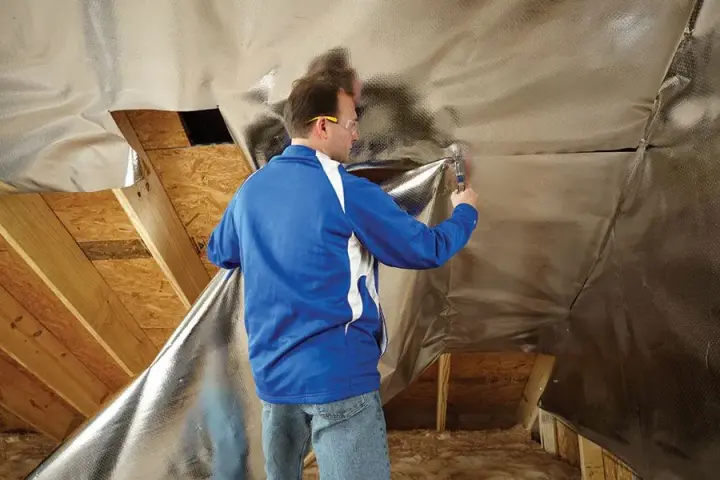If you've ever looked at insulation packaging or talked to a contractor about upgrading your home's insulation, you've probably heard the term "R-value" thrown around. But what does it actually mean? And more importantly, how do you know if your North Carolina home has enough insulation?
Let's break down everything you need to know about R-values in plain English, so you can make informed decisions about your home's comfort and energy efficiency.
What is an R-Value?
R-value is simply a measurement of how well insulation resists heat flow. The "R" stands for "resistance" to heat transfer. The higher the R-value, the better the insulation performs at keeping heat where you want it—inside during winter, outside during summer.
Think of it like a winter coat. A thin windbreaker might have a low R-value, while a thick down parka has a high R-value. The parka does a better job keeping you warm because it resists heat loss more effectively.
Here's what you need to know about R-values:
- Higher numbers = better insulation - R-30 insulation performs better than R-19
- R-values are additive - If you add R-19 insulation on top of existing R-11, you get approximately R-30 total
- They don't change over time - Quality insulation maintains its R-value for decades (though it can be reduced by compression, moisture, or damage)
- Different materials achieve R-values differently - Some materials are more efficient per inch than others
North Carolina's Climate Zone and R-Value Requirements
North Carolina is primarily located in Climate Zone 4, which means we experience hot, humid summers and moderately cold winters. This unique climate presents specific challenges for home insulation.
The U.S. Department of Energy recommends the following R-values for Climate Zone 4 (which includes Greensboro, Winston-Salem, High Point, and most of the Triad area):
Attic Insulation
- Recommended: R-49 to R-60
- Minimum: R-38
- This is about 13-19 inches of blown fiberglass or cellulose insulation
Crawl Space or Floor Insulation
- Recommended: R-25 to R-30
- Minimum: R-13
- For unheated crawl spaces, walls should have R-13 to R-15
Wall Insulation
- Recommended: R-13 to R-21
- This applies to exterior walls and is typically installed during construction
Most homes in the Greensboro area built before 2000 have significantly less attic insulation than the current recommendations. If your attic has R-19 or less, you're almost certainly paying more than you should on heating and cooling bills.
How to Check Your Current R-Value
Wondering if your home meets these standards? Here's how you can get a general idea without climbing into your attic:
- Check building records - If you have original building documents or a home inspection report, the insulation type and R-value might be listed
- Look for visible signs - From an attic access point, you may be able to see insulation depth with a flashlight and ruler
- Measure insulation depth - If you can safely access your attic, measure the depth:
- Fiberglass batts: ~3.5 inches = R-11, ~6 inches = R-19, ~9.5 inches = R-30
- Blown fiberglass or cellulose: ~8 inches = R-30, ~13 inches = R-49
- Schedule a free inspection - The easiest way is to have a professional like our insulation experts evaluate your home's current insulation levels
Keep in mind that older insulation can settle or compress over time, reducing its effective R-value even if it was adequate when originally installed.
Why R-Value Matters for Your Wallet
Inadequate insulation doesn't just affect comfort—it significantly impacts your energy bills. According to the U.S. Department of Energy, heating and cooling account for about 50-70% of a typical home's energy usage.
Here's what proper insulation can do for you:
- Lower energy bills - Homeowners in North Carolina typically save 15-30% on heating and cooling costs after upgrading attic insulation
- More consistent temperatures - No more hot and cold spots throughout your house
- Reduced HVAC strain - Your heating and air conditioning system won't work as hard, extending its lifespan
- Better humidity control - Proper insulation helps manage moisture issues common in NC's humid climate
- Increased home value - Energy-efficient homes are more attractive to buyers
For a typical 2,000 square foot home in Greensboro with R-19 attic insulation, upgrading to R-49 could save $300-500 annually on energy costs. That means the investment pays for itself in just a few years.
Does More Always Mean Better?
While higher R-values are generally beneficial, there's a point of diminishing returns. Going from R-19 to R-49 will make a huge difference. Going from R-49 to R-60 will have a much smaller impact.
For most North Carolina homes, R-49 to R-60 in the attic strikes the best balance between performance and cost. Beyond that, you're better off investing in other energy efficiency improvements like:
- Air sealing around doors, windows, and penetrations
- Installing radiant barriers to reflect heat in summer
- Upgrading to more efficient HVAC systems
- Adding crawl space insulation and moisture barriers
What About Radiant Barriers?
In North Carolina's hot summers, traditional R-value insulation works by slowing heat transfer through conduction. But up to 97% of summer attic heat comes from radiant heat—heat that radiates from your hot roof directly into your attic space.
This is where radiant barriers come in. Products like AtticFoil reflect radiant heat before it can warm up your attic, which means your traditional insulation works more effectively. Think of radiant barriers and traditional insulation as a team—they work together to keep your home comfortable year-round.
Many of our customers see attic temperatures drop by 20-30°F after installing radiant barriers, which makes a significant difference in how hard their AC has to work during July and August.
Common R-Value Mistakes Homeowners Make
When it comes to insulation, we see homeowners make several common mistakes:
1. Assuming Existing Insulation is Enough
Building codes have changed significantly over the decades. What was considered adequate in 1980 (often R-19) falls far short of today's R-49 recommendations. If your home was built before 2000, you almost certainly don't have enough attic insulation.
2. Focusing Only on R-Value
R-value is important, but it's not the only factor. Air sealing is just as critical—insulation can't perform well if air is leaking around it. We always check for and seal air leaks before adding insulation.
3. Compressing Insulation
Squashing insulation to fit it into a space reduces its R-value. Insulation needs air pockets to work effectively. We see this frequently with DIY installations or when homeowners store items directly on top of attic insulation.
4. Ignoring Moisture Issues
In North Carolina's humid climate, moisture management is crucial. Wet insulation loses R-value and can lead to mold growth. This is especially important in crawl spaces and attics where moisture problems are common.
5. Choosing the Wrong Insulation Type
Different situations call for different insulation materials. Blown-in insulation is usually ideal for attics because it fills gaps and irregular spaces better than batts, achieving more consistent R-values throughout the space.
Taking the Next Step
Understanding R-values is the first step toward a more comfortable, energy-efficient home. If you're not sure whether your Greensboro home has adequate insulation, or if you're noticing signs like high energy bills, inconsistent temperatures, or a constantly running HVAC system, it's worth getting a professional assessment.
At 4 Seasons Insulation, we provide free, no-pressure inspections where we'll:
- Measure your current insulation levels and R-values
- Identify air leaks and moisture issues
- Recommend the best solutions for your specific home and budget
- Provide a detailed estimate with expected energy savings
We specialize in Climate Pro blown insulation (formaldehyde-free and environmentally friendly) and AtticFoil radiant barriers, giving North Carolina homeowners the best combination of traditional and radiant heat management.
Ready to find out if your home has enough insulation? Contact us today to schedule your free inspection. Let's make sure your home has the R-value it needs to keep you comfortable and your energy bills under control, no matter what the North Carolina weather brings.





